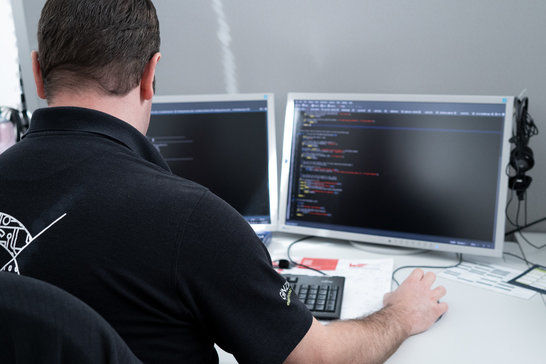Special
How to program embedded systems?
Embedded systems perform their service reliably in the shadows. They are as diverse as their applications in a wide variety of industries. Learn how to program them here.

What is an Embedded System?
An Embedded System is a programmable electronic system that is used for a very specific purpose in a wide range of industries - from the automotive industry to consumer electronics. Think of a printer in your office. Inside this printer one or more microprocessors operate with a limited amount of memory and peripheral electronics, to take data and print it out on paper. The tasks of this embedded system are manifold:
- Communication with the PC via network, USB etc.
- Reaction to keystrokes on the printer
- Feedback on the printer display
- Control of the entire printer mechanics (motors, sensors etc.)
- Control and monitoring of the entire system
Depending on the desired printer performance (color, resolution, pages/minute), these tasks must be performed more or less quickly. For this purpose, as with PCs, there are processors of different performance classes. Well-known processor families are ARM, MIPS, Coldfire, 8051, but also the Intel x86 series known from the world of PCs.
How has Embedded System Development evolved over time?
In the past, the Development of Embedded Software was carried out directly in assembler, the machine language of the processor. Memory was expensive and very limited at that time. Assembler programming was still manageable to this extent and it was possible to optimize the programs down to the last bit. But reading, analyzing and maintaining the programs was only feasible with high effort. With growing functionality this way was therefore no longer practicable. The complexity of tens of thousands of lines of assembly code led to the use of new "higher-level" programming languages such as C, C++ or Java. Higher level programming languages and program libraries allow faster realization of embedded programs.

Innovations in Embedded System Development were followed by the operating systems
Due to advances in Embedded System Development an increase in the efficiency of certain processes can occur. For example, a printer manufacturer can prepare a program library for all the displays in his devices and then simply reuse it in different gadgets. Because of those advantages, over time, operating systems also took a step into the world of Embedded Software Development. As in a PC, these take over fundamental tasks in the system to
- exchange data via networks,
- manage memory or
- respond to inputs.
The embedded operating systems differ in many areas from the known PC operating systems, are usually much leaner and react exactly predictable to events (real-time capable). Well-known representatives of embedded operating systems are VxWorks, Nucleus, QNX but also numerous Linux variants. Recently, well-known systems such as Windows or Android have also gained a foothold in the embedded sector.
Programming languages - a short digression
Assembler
Assembly language, also known as assembler for short, is a programming language that is geared towards the instruction set of a specific type of computer (= processor architecture). It is therefore referred to as a machine-oriented programming language and - as the successor to direct programming with numerical codes - as a second-generation programming language. Instead of a binary code of the machine language, commands and their operands can be replaced by
- easier to understand, mnemonic symbols in text form (e.g. “MOVE”),
- operands, sometimes as a symbolic address (e.g. “zip code”).
The source code of an assembler program is translated into machine code with the help of translation software. In higher programming languages, on the other hand, a so-called compiler translates more abstract commands into the machine code of the given target architecture - or into an intermediate language.
Higher programming languages
A high-level programming language is used to write a computer program that differs significantly from the machine language level in terms of abstraction and complexity. The boundary between simple and high-level programming languages is not clearly defined. However, the minimum characteristic is that the commands of higher programming languages cannot be understood and executed directly by microprocessors. Commands must be translated into machine language by interpreters or compilers. Extensive operating systems are often interposed.
In simple terms, it can be said that higher programming languages (or “third generation programming languages”) express more and more complex logical relationships in a shorter form. These are then broken down into machine code using automated processes. This increases the readability of the program text and reduces the number of explicit recursive tasks.
Some examples of higher programming languages:
- Java
- C++
- JavaScript
- C#
- Python
- PHP
- Ruby
Do you have any questions regarding Embedded System Development?
Are there still uncertainties and open questions left or are you interested in our services? Then contact our experts and find out more about Embedded Software Development!
